From Worst To First: Here’s How Each State Ranks For Finding Tech Talent In 2021
Looking for highly skilled technology workers? CRN’s annual Best States project ranks all 50 states for finding and hiring technology employees.
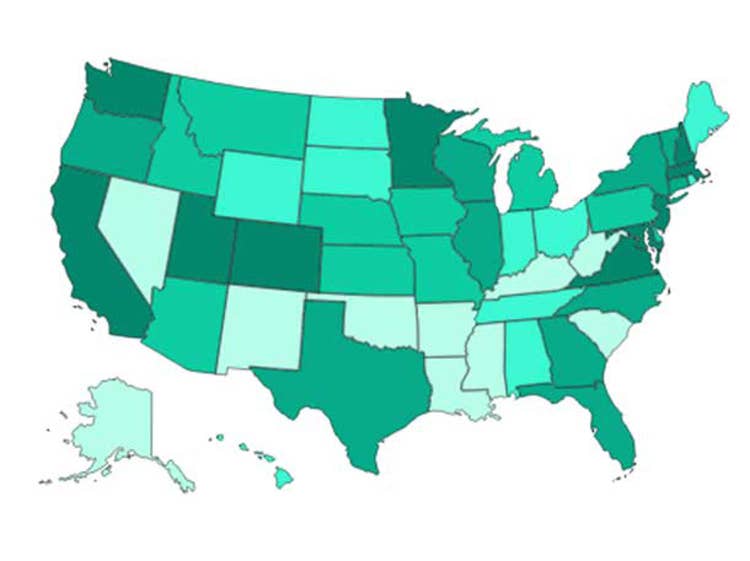
Tech Talent In The 50 States
Ask any channel company executive about their biggest challenges today and finding qualified candidates to fill technology positions within their company will likely be at or near the top of the list.
The media today is filled with stories about how businesses in all sectors of the economy are struggling in the wake of the pandemic to find people to fill open jobs. But finding and hiring qualified people in the IT industry is almost always a significant challenge for IT vendors, for IT managers inside businesses and organizations – and certainly for executives and business owners in the channel.
This marks the ninth year CRN has undertaken its Best States project to provide channel company executives and entrepreneurs with state-by-state information to help them start and run a solution provider business.
This year, with the problem of finding and hiring tech talent seemingly more acute than ever, we’ve focused on collecting and crunching data on a state-by-state basis to help the channel get a clearer picture of the tech workforce, providing insights for solution providers looking to hire for the home office, for hiring remote workers (increasingly common in a post-pandemic world), and hiring for expansions into new states and regions.
The following slides examine each state according to a range of criteria. For workforce education and experience we specifically look at such statistics as state education rankings and STEM (science, technology, engineering and math) concentration, the number of workers in each state with college degrees and science/engineering degrees, state tech employment growth or declines (2019-2020) and estimates (2020-2021), tech jobs as a percent of each state’s total workforce, and tech salaries in each state.
We’ve also collected and analyzed general economic and employment data for each state including unemployment rates, job posting volume, GDP (and tech industry as a percent of total GDP), the number of solution providers in each state, and each state’s economic and employment recovery from the COVID-19 pandemic.
(A complete look at the raw data is available at CRN.com. A discussion of the data, along with a complete list of criteria and data sources, is provided on the final slide of this presentation.)
The following ranks all 50 states, starting with the worst (No. 50) to the best (No. 1) for finding and hiring tech talent overall. We also provide rankings for the “workforce education and experience” and the “state employment and economy” criteria categories, as well as specific data points such as the number of tech workers and average tech salary in each state.
Keep in mind that every state has its strengths and weaknesses: California, for example, has nearly twice as many tech workers than the next nearest state. But there are nearly twice as many tech companies – including solution providers – competing for those workers. And with the second-highest average salary for tech workers, you’ll pay more for that tech talent in California.

No. 50: Louisiana (No. 49 in 2020)
Workforce Experience and Education Rank: 50
State Employment and Economy Rank: 44
Tech Industry Employment: 83,863
Tech Worker Average Salary: $73,840
Louisiana’s tech employment declined by 1,069 jobs (1.3 percent) in 2020, but is forecast to rebound in 2021 with 1,258 jobs.
Technology GDP/GRP accounts for 3.5 percent of Louisiana’s total GDP/GRC, No. 49 among the states.
The Pelican State is last – No. 50 – on WalletHub’s ranking of state recoveries from the COVID-19 pandemic.

No. 49: West Virginia (No. 47 in 2020)
Workforce Experience and Education Rank: 49
State Employment and Economy Rank: 47
Tech Industry Employment: 30,130
Tech Worker Average Salary: $73,410
Technology GDP/GRP accounts for only 3.6 percent of West Virginia’s total GDP/GRC, No. 48 among the states.
With 69,661 businesses and only 266 solution providers, the Mountain State is No. 3 in the number of potential business customers per solution provider (262.0).

No. 48: Mississippi (No. 50 in 2020)
Workforce Experience and Education Rank: 48
State Employment and Economy Rank: 48
Tech Industry Employment: 45,410
Tech Worker Average Salary: $71,720
Mississippi is No. 50 with 22.7 percent of the workforce, 25 to 44 years old, with a bachelor’s degree.
The Magnolia State is also ranked No. 50 for the number of science and engineering degree holders.

No. 47: Arkansas (No. 48 in 2020)
Workforce Experience and Education Rank: 47
State Employment and Economy Rank: 42
Tech Industry Employment: 255,998
Tech Worker Average Salary: $87,030
Arkansas is forecast to add 1,075 tech jobs in 2021, No. 35 among the states, up 1.9 percent from 2020.
With 132,997 businesses and only 374 solution providers, Arkansas is No. 1 in the number of potential business customers per solution provider (355.2).

No. 46: Nevada (No. 46 in 2020)
Workforce Experience and Education Rank: 42
State Employment and Economy Rank: 45
Tech Industry Employment: 69,874
Tech Worker Average Salary: $79,650
Nevada is ranked No. 49 among all states by WalletHub on employment rates bouncing back in 2021. The Silver State’s 7.7 percent unemployment rate in July was the highest among the states.
Nevada is No. 49 with 25.4 percent of the workforce, 25 to 44 years old, with a bachelor’s degree.

No. 45: Alaska (No. 41 in 2020)
Workforce Experience and Education Rank: 40
State Employment and Economy Rank: 46
Tech Industry Employment: 17,914
Tech Worker Average Salary: $83,250
Alaska is No. 50 among all states with tech jobs accounting for only 8.1 percent of the total workforce.
CompTIA forecasts that Alaska will add only 130 tech jobs in 2021 over 2020, putting it at No. 48 among all states.

No. 44: Kentucky (No. 40 in 2020)
Workforce Experience and Education Rank: 43
State Employment and Economy Rank: 41
Tech Industry Employment: 98,278
Tech Worker Average Salary: $75,330
The Bluegrass State, which is estimated to have lost 623 tech jobs in 2020 (0.6 percent) is forecast to add 1,63o tech jobs in 2021, a gain of 1.7 percent.

No. 43: Oklahoma (No. 34 in 2020)
Workforce Experience and Education Rank: 45
State Employment and Economy Rank: 35
Tech Industry Employment: 93,136
Tech Worker Average Salary: $75,560
Oklahoma is No. 49 among all states with tech jobs accounting for only 8.9 percent of the total workforce.
The Sooner State is No. 49 on WalletHub’s ranking of state recoveries from the COVID-19 pandemic.

No. 42: South Carolina (No. 37 in 2020)
Workforce Experience and Education Rank: 44
State Employment and Economy Rank: 33
Tech Industry Employment: 130,042
Tech Worker Average Salary: $77,080
South Carolina is No. 48 on WalletHub’s ranking of state recoveries from the COVID-19 pandemic.

No. 41: New Mexico (No. 43 in 2020)
Workforce Experience and Education Rank: 41
State Employment and Economy Rank: 36
Tech Industry Employment: 71,178
Tech Worker Average Salary: $79,160
New Mexico is No. 48 with only 25.5 percent of the workforce, 25 to 44 years old, with a bachelor’s degree.
New Mexico was one of several states with an unemployment rate of 7.6 percent in July 2021 – among the highest rates among the 50 states.

No. 40: Wyoming (No. 33 in 2020)
Workforce Experience and Education Rank: 25
State Employment and Economy Rank: 50
Tech Industry Employment: 9,621
Tech Worker Average Salary: $67,640
Technology GDP/GRP accounts for only 2.8 percent of Wyoming’s total GDP/GRC, No. 50 among the states.
The Cowboy State’s average tech worker salary is the lowest among all 50 states.

No. 39: Hawaii (No. 45 in 2020)
Workforce Experience and Education Rank: 26
State Employment and Economy Rank: 49
Tech Industry Employment: 30,465
Tech Worker Average Salary: $83,870
Hawaii is ranked No. 50 – the worst among all states – by WalletHub on employment rates bouncing back in 2021.
The Aloha State lost 416 tech jobs in 2020 and is forecast to lose 44 more (0.1 percent of the tech workforce) in 2021.

No. 38: Alabama (No. 44 in 2020)
Workforce Experience and Education Rank: 46
State Employment and Economy Rank: 20
Tech Industry Employment: 148,657
Tech Worker Average Salary: $86,720
Alabama is No. 48 among all states with tech jobs accounting for only 11.3 percent of the total workforce.
Tech GDP/GRP, nevertheless, accounts for 7.1 percent of total GDP/GRC, ranking the Yellowhammer State No. 26.
Much of that is concentrated in Huntsville, which is listed at No. 4 on CompTIA’s list of “cybermetros” (behind San Jose, Seattle and San Francisco) because tech accounts for 27 percent of the local economy.

No. 37: Rhode Island (No. 39 in 2020)
Workforce Experience and Education Rank: 32
State Employment and Economy Rank: 40
Tech Industry Employment: 35,426
Tech Worker Average Salary: $92,410
Rhode Island lost 349 tech jobs (1.0 percent of the tech workforce) in 2020. But the Ocean State is expected to generate 457 new tech jobs (a 1.3 percent gain) in 2021.
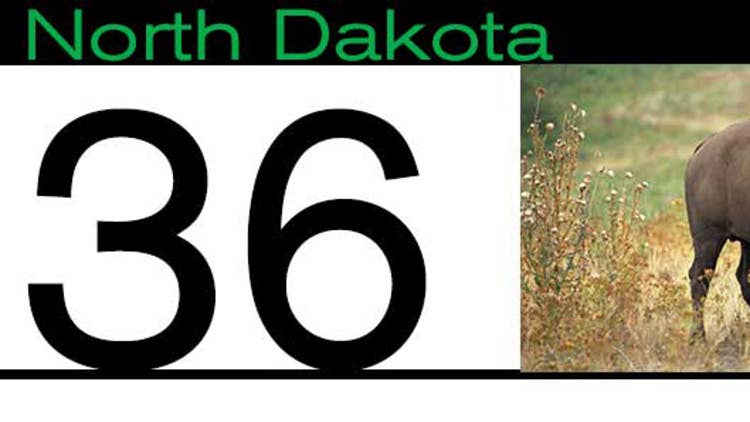
No. 36: North Dakota (No. 31 in 2020)
Workforce Experience and Education Rank: 29
State Employment and Economy Rank: 43
Tech Industry Employment: 21,443
Tech Worker Average Salary: $71,820
With 54,783 businesses and 209 solution providers, North Dakota is No. 2 in the number of potential business customers per solution provider (262.4).
North Dakota is ranked No. 49 for the number of science and engineering degree holders.

No. 35: Tennessee (No. 32 in 2020)
Workforce Experience and Education Rank: 38
State Employment and Economy Rank: 29
Tech Industry Employment: 174,067
Tech Worker Average Salary: $76,660
Thirty-three percent of the workforce between 25 and 44 years old in Tennessee have a bachelor’s degree, ranking the Volunteer State No. 34 among all states.
Tennessee, which lost 426 tech jobs in 2020, is forecast to add 4,313 workers to its tech workforce in 2021, No. 16 among the states, for a gain of 2.8 percent.
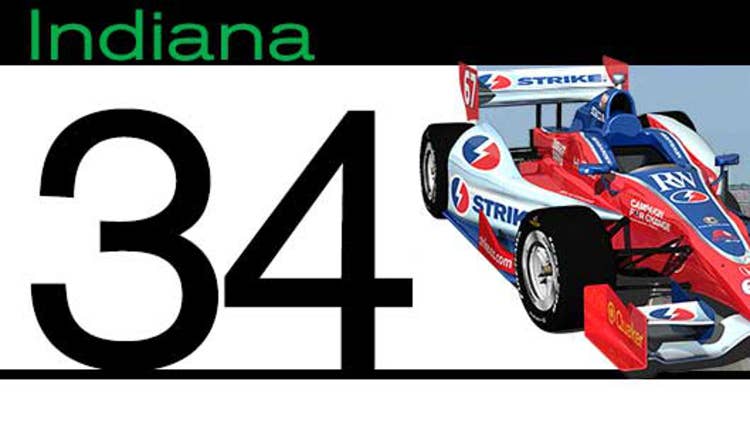
No. 34: Indiana (No. 30 in 2020)
Workforce Experience and Education Rank: 39
State Employment and Economy Rank: 27
Tech Industry Employment: 184,274
Tech Worker Average Salary: $78,340
Indiana lost 1,908 tech jobs (1.0 percent of the tech workforce) in 2020, ranking it No. 44 among all states. But the Hoosier State is forecast to add 3,676 tech jobs in 2021, No. 19 among all states.

No. 33: Maine (No. 42 in 2020)
Workforce Experience and Education Rank: 30
State Employment and Economy Rank: 37
Tech Industry Employment: 35,935
Tech Worker Average Salary: $80,030
Maine is forecast to add 749 tech jobs in 2021 (up 2.1 percent), No. 38 among all states.
The Pinetree State is No. 2 on WalletHub’s ranking of state recoveries from the COVID-19 pandemic.
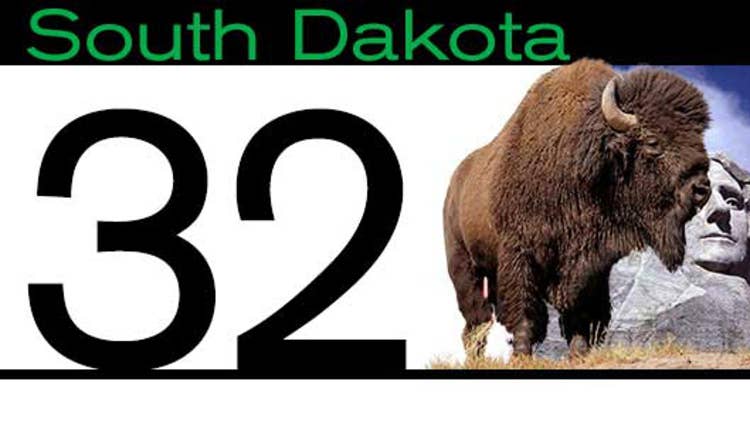
No. 32: South Dakota (No. 36 in 2020)
Workforce Experience and Education Rank: 31
State Employment and Economy Rank: 34
Tech Industry Employment: 22,158
Tech Worker Average Salary: $70,000
South Dakota’s average tech worker salary is the second lowest among the 50 states, only larger than Wyoming’s.
The Mount Rushmore State is No. 1 on WalletHub’s ranking of state recoveries from the COVID-19 pandemic.

No. 31: Ohio (No. 28 in 2020)
Workforce Experience and Education Rank: 36
State Employment and Economy Rank: 24
Tech Industry Employment: 391,539
Tech Worker Average Salary: $86,270
Ohio lost 4,677 tech jobs (1.2 percent of the tech workforce) in 2020, the second most of any state. In 2021 the Buckeye State is forecast to add 5,840 jobs (a gain of 1.5 percent) to the workforce.
Ohio’s total tech industry employment of 391,539 just puts the state in the top 10 states.

No. 30: Montana (No. 35 in 2020)
Workforce Experience and Education Rank: 24
State Employment and Economy Rank: 38
Tech Industry Employment: 22,853
Tech Worker Average Salary: $71,540
Montana’s average tech worker salary is the third lowest among all 50 states, larger only than Wyoming and South Dakota.

No. 29: Idaho (No. 27 in 2020)
Workforce Experience and Education Rank: 34
State Employment and Economy Rank: 21
Tech Industry Employment: 53,803
Tech Worker Average Salary: $78,320
Idaho, with a 3.0 percent unemployment rate in July 2021, is ranked No. 3 by WalletHub on employment rates bouncing back in 2021.

No. 28: Pennsylvania (No. 26 in 2020)
Workforce Experience and Education Rank: 35
State Employment and Economy Rank: 17
Tech Industry Employment: 441,162
Tech Worker Average Salary: $87,970
In 2020 Pennsylvania lost 2,389 tech jobs – No. 47 among all states. But the Keystone State is forecast to add 7,045 jobs (up 1.6 percent) to its tech worker ranks in 2021, ranking it a respectable No. 11.
U.S. News ranks Pennsylvania No. 50, at the bottom of all states, for higher education, based on such criteria as educational attainment, graduation rates, college debt and tuition costs. But 39.5 percent of the state’s workforce between 25 and 44 years old has a bachelor’s degree, No. 15 among the states.

No. 27: Arizona (No. 17 in 2020)
Workforce Experience and Education Rank: 33
State Employment and Economy Rank: 18
Tech Industry Employment: 255,998
Tech Worker Average Salary: $87,030
When many states were losing tech jobs in 2020 Arizona gained 2,547 jobs, increasing its tech workforce by 1.0 percent. And the Grand Canyon State is forecast to add 6,912 tech jobs (up 2.7 percent).

No. 26: Delaware (No. 29 in 2020)
Workforce Experience and Education Rank: 17
State Employment and Economy Rank: 39
Tech Industry Employment: 31,243
Tech Worker Average Salary: $99,340
Delaware is No. 3 among all states with tech jobs accounting for 26.9 percent of the total workforce.
CompTIA forecasts that Delaware will lose 62 tech jobs in 2021, putting it at No. 50 in job gains among all states.

No. 25: Missouri (No. 18 in 2020)
Workforce Experience and Education Rank: 28
State Employment and Economy Rank: 25
Tech Industry Employment: 208,690
Tech Worker Average Salary: $82,040
Missouri lost only 14 tech jobs in 2020 and the Show Me State is forecast to add 4,121 jobs to its tech force in 2021, a gain of 2.0 percent.
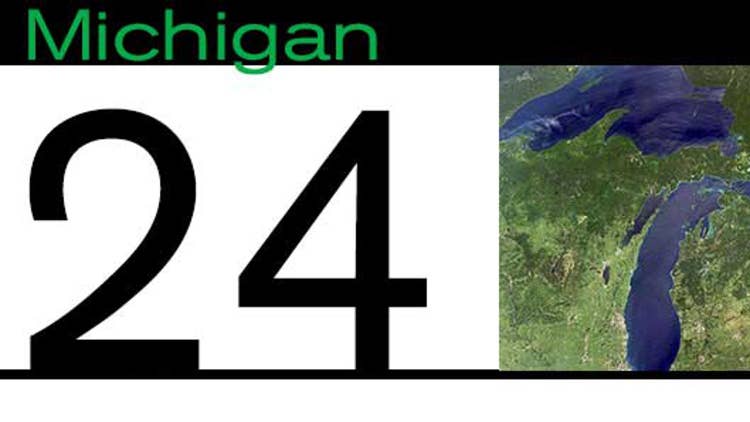
No. 24: Michigan (No. 24 in 2020)
Workforce Experience and Education Rank: 37
State Employment and Economy Rank: 13
Tech Industry Employment: 386,901
Tech Worker Average Salary: $105,400
Michigan lost 14,023 tech jobs (3.5 percent of the tech workforce) in 2020, the most of any state. The state is expected to add 2,539 tech jobs (for a 0.7 percent gain) in 2021.

No. 23: Kansas (No. 19 in 2020)
Workforce Experience and Education Rank: 21
State Employment and Economy Rank: 31
Tech Industry Employment: 98,811
Tech Worker Average Salary: $78,420
Kansas increased its tech employment ranks by 1,131 jobs (1.2 percent) in 2020 and the Sunflower State is forecast to add another 1,205 tech jobs this year.

No. 22: Iowa (No. 25 in 2020)
Workforce Experience and Education Rank: 22
State Employment and Economy Rank: 28
Tech Industry Employment: 95,657
Tech Worker Average Salary: $81,820
The Hawkeye State is No. 3 on WalletHub’s ranking of state recoveries from the COVID-19 pandemic.

No. 21: Nebraska (No. 13 in 2020)
Workforce Experience and Education Rank: 16
State Employment and Economy Rank: 30
Tech Industry Employment: 64,048
Tech Worker Average Salary: $80,770
Nebraska is ranked No. 1 – the best – by WalletHub on employment rates bouncing back in 2021. The Cornhusker State’s 2.3 percent unemployment rate in July 2021 was the lowest among all 50 states.

No. 20: Connecticut (No. 21 in 2020)
Workforce Experience and Education Rank: 13
State Employment and Economy Rank: 32
Tech Industry Employment: 137,744
Tech Worker Average Salary: $95,550
Connecticut is No. 3 in the education attainment levels of its available workforce and 44.6 percent of individuals 25 to 44 years old in the Constitution State have a bachelor’s degree (No. 5).
Connecticut, however, is expected to add only 252 tech jobs (0.2 percent) in 2021

No. 19: Illinois (No. 16 in 2020)
Workforce Experience and Education Rank: 19
State Employment and Economy Rank: 23
Tech Industry Employment: 442,076
Tech Worker Average Salary: $93,320
Illinois lost 3,950 tech jobs (0.9 percent of the tech workforce) in 2020, the third most of any state. In 2021 the Prairie State is forecast to add 3,519 tech jobs for a 0.8 percent gain.

No. 18: Texas (No. 7 in 2020)
Workforce Experience and Education Rank: 27
State Employment and Economy Rank: 7
Tech Industry Employment: 1,060,588
Tech Worker Average Salary: $93,690
Texas was one of the few states that increased its tech employee base in 2020, adding 11,862 jobs (a 1.1 percent gain) over 2019.
CompTIA forecasts that the Lone Star State will add 29,171 tech jobs in 2021 (up 2.8 percent), putting it at No. 2 among all states.

No. 17: Oregon (No. 15 in 2020)
Workforce Experience and Education Rank: 18
State Employment and Economy Rank: 22
Tech Industry Employment: 166,862
Tech Worker Average Salary: $92,040
With a state GDP of just under $219 billion, Oregon is No. 25 among all 50 states. But tech GDP accounts for 12.1 percent of total GDP, No. 8 among all states.

No. 16: Wisconsin (No. 22 in 2020)
Workforce Experience and Education Rank: 20
State Employment and Economy Rank: 19
Tech Industry Employment: 216,210
Tech Worker Average Salary: $82,270
Tech GDP in Wisconsin accounts for 7.3 percent of the Badger State’s total GDP, No. 25 among all states.
Wisconsin lost 1,965 tech jobs (0.9 percent) in 2020, but is forecast to add 3,150 tech jobs (1.5 percent) in 2021.

No. 15: Vermont (No. 38 in 2020)
Workforce Experience and Education Rank: 14
State Employment and Economy Rank: 26
Tech Industry Employment: 22,509
Tech Worker Average Salary: $80,180
Tech job postings in the Green Mountain State increased 75 percent between the first and second quarters of 2021, the biggest increase among all 50 states.
Vermont’s $28.2 billion GDP in 2020 was the smallest among all 50 states.

No. 14: Georgia (No. 5 in 2020)
Workforce Experience and Education Rank: 23
State Employment and Economy Rank: 2
Tech Industry Employment: 370,068
Tech Worker Average Salary: $91,510
Georgia is forecast to gain 8,766 tech jobs (up 2.4 percent) in 2021, ranking it No. 7 among all states. That after gaining 917 tech jobs in 2020 when many states saw declines in tech employment.
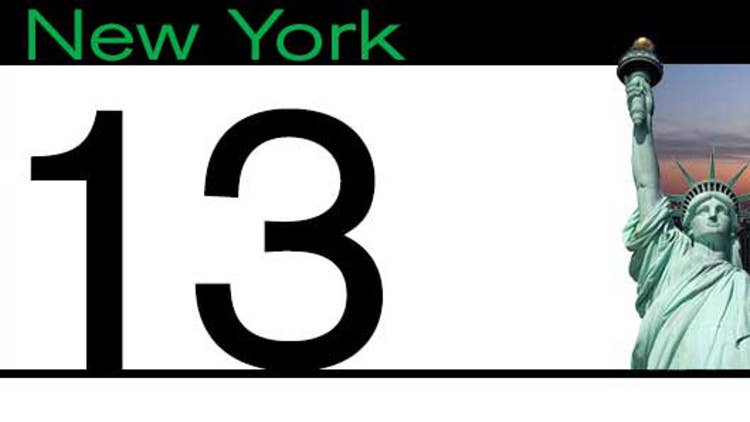
No. 13: New York (No. 20 in 2020)
Workforce Experience and Education Rank: 12
State Employment and Economy Rank: 14
Tech Industry Employment: 670,806
Tech Worker Average Salary: $103,280
New York is No. 3 with 45.6 percent of the workforce, 25 to 44 years old, with a bachelor’s degree.
The Empire State gained 2,002 tech jobs in 2020 (up 0.3 percent) and is expected to gain 13,868 (2.1 percent) tech jobs in 2021 – No. 4 among all 50 states.

No. 12: North Carolina (No. 9 in 2020)
Workforce Experience and Education Rank: 15
State Employment and Economy Rank: 9
Tech Industry Employment: 362,686
Tech Worker Average Salary: $91,920
Tech job postings in North Carolina increased just 3 percent between the first and second quarters of 2021, the smallest increase among all 50 states.

No. 11: Florida (No. 11 in 2020)
Workforce Experience and Education Rank: 11
State Employment and Economy Rank: 10
Tech Industry Employment: 595,156
Tech Worker Average Salary: $82,810
CompTIA forecasts that Florida will add 16,035 tech jobs (up 2.7 percent) in 2021 over 2020, putting it at No. 3 among all states.
Florida is No. 3 in the number of tech business establishments (behind only California and Texas) with 36,344.

No. 10: New Hampshire (No. 23 in 2020)
Workforce Experience and Education Rank: 9
State Employment and Economy Rank: 12
Tech Industry Employment: 71,912
Tech Worker Average Salary: $94,650
New Hampshire’s 2.9 percent unemployment rate in July 2021 was the third lowest among all states.
With 81,866 businesses and 1,143 solution providers, New Hampshire is No. 48 in the number of potential business customers per solution provider (71.6).

No. 9: Minnesota (No. 8 in 2020)
Workforce Experience and Education Rank: 10
State Employment and Economy Rank: 8
Tech Industry Employment: 245,587
Tech Worker Average Salary: $94,570
Minnesota lost 2,207 tech jobs (0.9 percent of the tech workforce) in 2020. But the North Star State is forecast to gain 2,639 tech jobs (1.1 percent) in 2021.

No. 8: New Jersey (No. 14 in 2020)
Workforce Experience and Education Rank: 7
State Employment and Economy Rank: 16
Tech Industry Employment: 339,951
Tech Worker Average Salary: $104,090
New Jersey is No. 2 with 48.1 percent of the workforce, 25 to 44 years old, with a bachelor’s degree.

No. 7: California (No. 12 in 2020)
Workforce Experience and Education Rank: 8
State Employment and Economy Rank: 6
Tech Industry Employment: 1,882,167
Tech Worker Average Salary: $116,820
Tech GDP/GRP accounts for 18.9 percent of California’s total GDP/GRP – No. 2 among all states.
California is ranked No. 48 by WalletHub on employment rates bouncing back in 2021.
CompTIA forecasts that California will add 41,632 tech jobs in 2021, putting it at No. 1 among all states. The Golden State added 8,680 tech jobs in 2020.
California is ranked No. 2 for the number of science and engineering degree holders.

No. 6: Utah (No. 2 in 2020)
Workforce Experience and Education Rank: 6
State Employment and Economy Rank: 5
Tech Industry Employment: 152,687
Tech Worker Average Salary: $82,830
Utah is ranked No. 2 by WalletHub on employment rates bouncing back in 2021. The Beehive State’s 2.6 percent unemployment rate in July 2021 was the second lowest among all states.

No. 5: Maryland (No. 4 in 2020)
Workforce Experience and Education Rank: 5
State Employment and Economy Rank: 15
Tech Industry Employment: 297,993
Tech Worker Average Salary: $105,150
Maryland is ranked No. 3 among all states for the number of science and engineering degree holders.
With 324,337 businesses and 4,714 solution providers, Maryland is No. 49 in the number of potential business customers per solution provider (68.4).

No. 4: Colorado (No. 10 in 2020)
Workforce Experience and Education Rank: 3
State Employment and Economy Rank: 11
Tech Industry Employment: 313,260
Tech Worker Average Salary: $100,520
Colorado is No. 2 (behind only Massachusetts) on the Milken Institute Science Technology and Science Index, a benchmark for evaluating a state’s knowledge economy and capacity for achieving prosperity through scientific discovery and technological innovation.

No. 3: Virginia (No. 3 in 2020)
Workforce Experience and Education Rank: 2
State Employment and Economy Rank: 4
Tech Industry Employment: 451,268
Tech Worker Average Salary: $107,130
Virginia’s average tech worker salary is the third highest among all 50 states.
With 471,167 businesses and 7,472 solution providers, Virginia is No. 50 in the number of potential business customers per solution provider (63.1).
The Old Dominion State is forecast to add 8,523 tech jobs in 2021 for a 1.9 percent gain in its tech work force.

No. 2: Massachusetts (No. 6 in 2020)
Workforce Experience and Education Rank: 4
State Employment and Economy Rank: 1
Tech Industry Employment: 450,548
Tech Worker Average Salary: $105,400
Massachusetts is No. 1 among all states with tech jobs accounting for 29.4 percent of the total workforce.
The Bay State is forecast to add 8,657 tech jobs in 2021, a 1.9 percent gain in its tech work force.
Tech GDP/GRP accounts for 18.1 percent of Massachusetts’ total GDP/GRP – No. 3 among all states.
Massachusetts is No. 1 with 52.9 percent of the workforce, 25 to 44 years old, with a bachelor’s degree.

No. 1: Washington (No. 1 in 2020)
Workforce Experience and Education Rank: 1
State Employment and Economy Rank: 3
Tech Industry Employment: 405,816
Tech Worker Average Salary: $122,640
Tech GDP/GRP accounts for 22.5 percent of Washington’s total GDP/GRP – No. 1 among all states.
Washington is No. 2 among all states with tech jobs accounting for 28.1 percent of the total workforce.
The Evergreen State is forecast to add 11,011 tech jobs in 2021, a 2.7 percent gain in its tech work force. That’s after adding 5,222 tech jobs (up 1.3 percent) in 2020.
Washington is ranked No. 1 for the number of science and engineering degree holders.
Washington’s average tech worker salary is the highest among all 50 states.

Best States Methodology and Data Sources
In developing the Best States 2021 Tech Talent project CRN utilized a wide range of sources to collect data about tech employment, education levels, business activity in each state and state economic performance.
As the criteria and data for the CRN Best States analysis is updated and modified each year – this year specifically to reflect the emphasis on finding and hiring tech workers – it’s expected that the rankings of each state will change.
For the analysis the criteria and collected data were weighted according to the results of a CRN Research survey of solution providers to determine their importance to solution providers.
In determining state rankings, criteria were scored as to whether the data was favorable or unfavorable for companies looking to hire tech talent. States ranked higher, for example, if they had larger numbers of technology workers or workers with higher education levels. But states received lower rankings in other criteria, such as states with the highest average tech worker salaries, as higher salaries are an impediment to finding and hiring tech workers.
The CompTIA Cyberstates 2021 report was the source for state-by-state tech job data and tech industry employment, including tech jobs gained or lost in 2020, tech job forecasts for 2021, the percentage of tech jobs of total state employment, and tech GDP/GRC (gross regional product) as a percentage of total state GDP/GRC.
It should be noted that CompTIA’s tech employment numbers for each state includes employees in the IT industry (including non-technical professionals such as sales, marketing and finance); technical professionals working across all segments of the economy (such as IT managers and support professionals working for a manufacturer or financial services company); and self-employed technical professionals.
Data on job postings between the first and second quarters of 2021 came from the Dice Q2 Tech Job Report. Other employment/unemployment data came from the U.S. Bureau of Labor Statistics and WalletHub.
Data and rankings for employee education, college degrees and other education criteria came from a variety of sources including Bloomberg, U.S. News, WalletHub and the National Science Foundation.
Tech salary data came from a Visual Capitalist report on states top tech salaries while the State Technology and Science Index from the Milken Institute provided benchmarks for evaluating a state’s knowledge economy and capacity for achieving prosperity through scientific discovery and technological innovation.
GDP data came from the U.S. Bureau of Economic Analysis. The data on states’ recovery from the COVID-19 pandemic came from a Sept. 8, 2021 report from WalletHub, which evaluated the 50 states according to 17 metrics including COVID-19 hospitalization and vaccination rates, consumer spending, job postings, and pre- and post-pandemic unemployment rates.
Data on job postings between the first and second quarters of 2021 came from the Dice Q2 Tech Job Report.
Data about state-by-state recovery from the COVID-19 pandemic came from a WalletHub report that examined a range of criteria including share of the vaccinated population, COVID-19 hospitalization and death rates, pre- and post-pandemic GDP and employment data, consumer spending and more
Data about the number of solution providers in each state came from The Channel Company, parent company of CRN and CRN.com